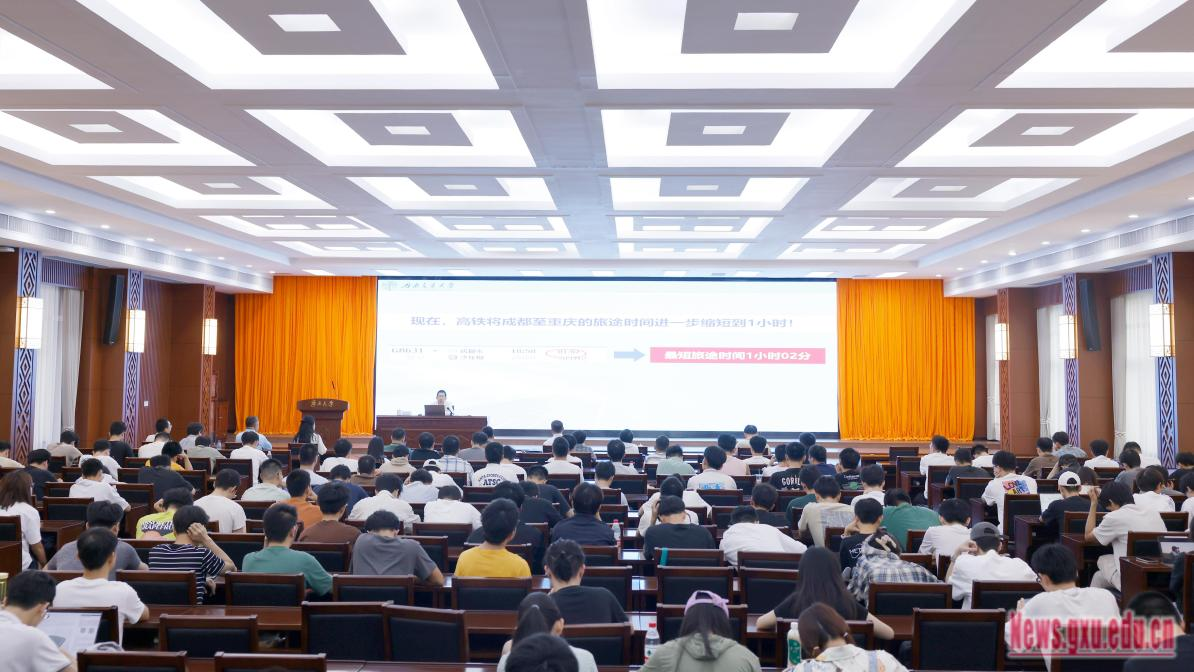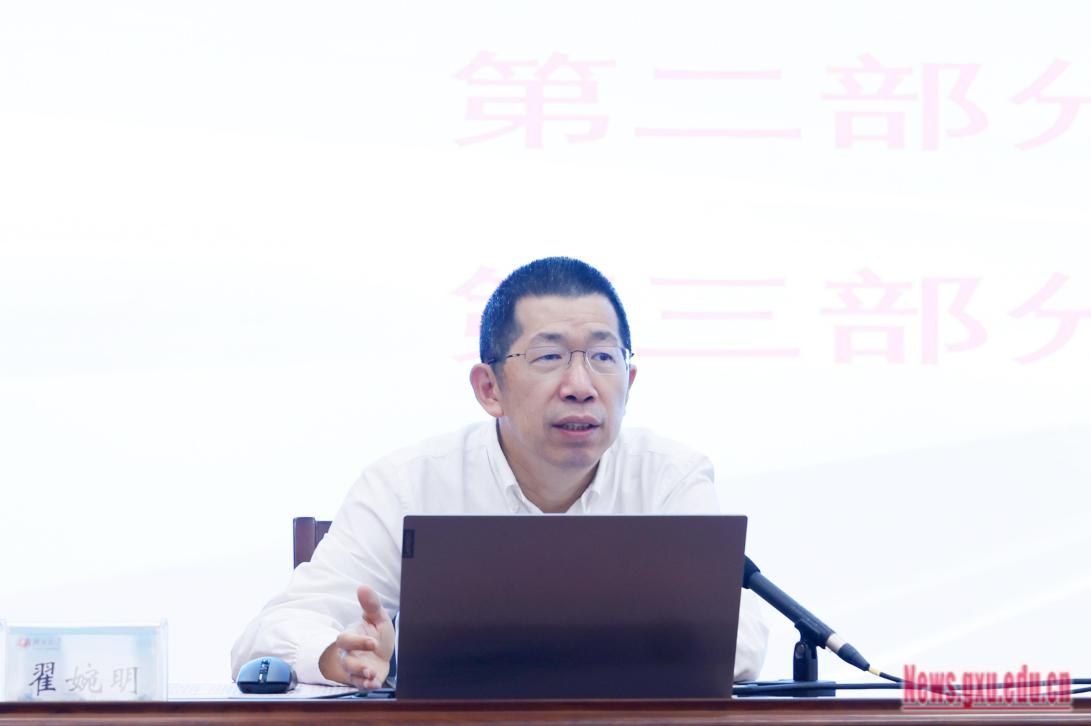Zhai Wanming, academician of Chinese Academy of Sciences, was invited to deliver a lecture titled "Development and Prospects of China's High-Speed Railways" at Guangxi University's Junwu Lecture Hall on June 18th. The session was chaired by Han Linhai, President and Deputy Secretary of the CPC GXU Committee.

During his presentation, Professor Zhai Wanming comprehensively reviewed the six phases of speed increases in China's railways, the development process of high-speed railway construction, and advancements in high-speed train technology. He delved into the mechanisms driving speed enhancements, optimizations in network layout, and innovations in train technology within China's high-speed rail system. Additionally, focusing on China's current development status, he outlined future directions for the country's high-speed railway development. The event included interactive exchanges with faculty and students present, addressing questions and clarifications.
Han Linhai warmly welcomed Professor Zhai Wanming's visit to GXU, emphasizing that China's high-speed railways have closely followed the country's developmental strides. He noted that these railways not only attest to China's significant leap in innovation capabilities but also showcase a remarkable "Chinese business card" on the global stage, highlighting the transition from "Made in China" to "Created in China."

Professor Zhai Wanming, a member of the Chinese Academy of Sciences and a foreign member of the National Academy of Engineering (USA), serves as the Chief Professor and Chair of the Academic Committee at Southwest Jiaotong University. He has long been engaged in the dynamics of railway engineering, pioneering new areas of research in railway system dynamics. His contributions include establishing a new theoretical framework for vehicle-track coupling dynamics and leading research in high-speed train-track-bridge dynamic interactions and safety assessment technologies.
The lecture attracted over 300 faculty members and students from the Research Institute, School of Mechanical Engineering, School of Electrical Engineering, School of Civil Engineering and Architecture.
 Home
>
News & Events
>
News
Home
>
News & Events
>
News
 Home
>
News & Events
>
News
Home
>
News & Events
>
News




